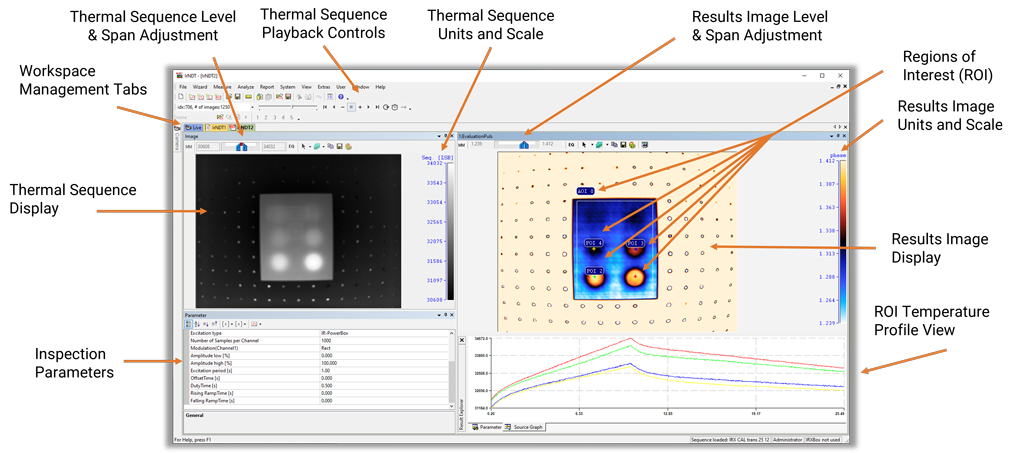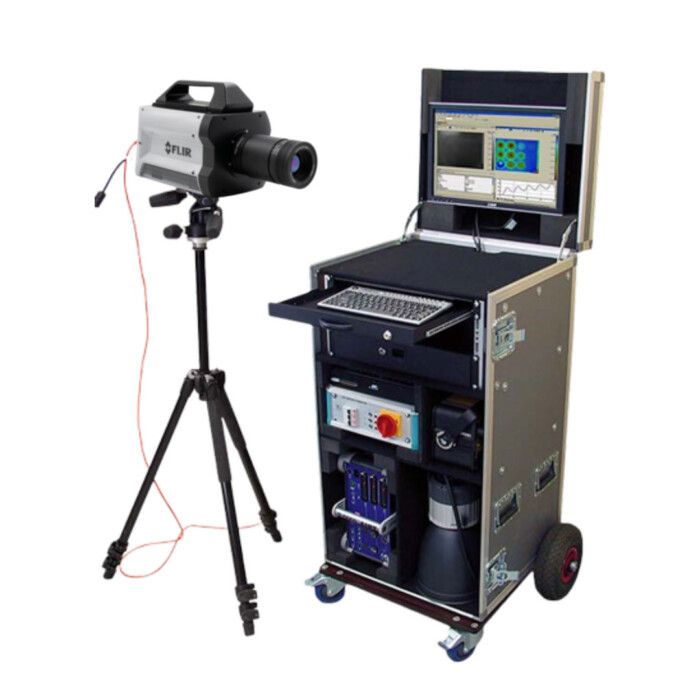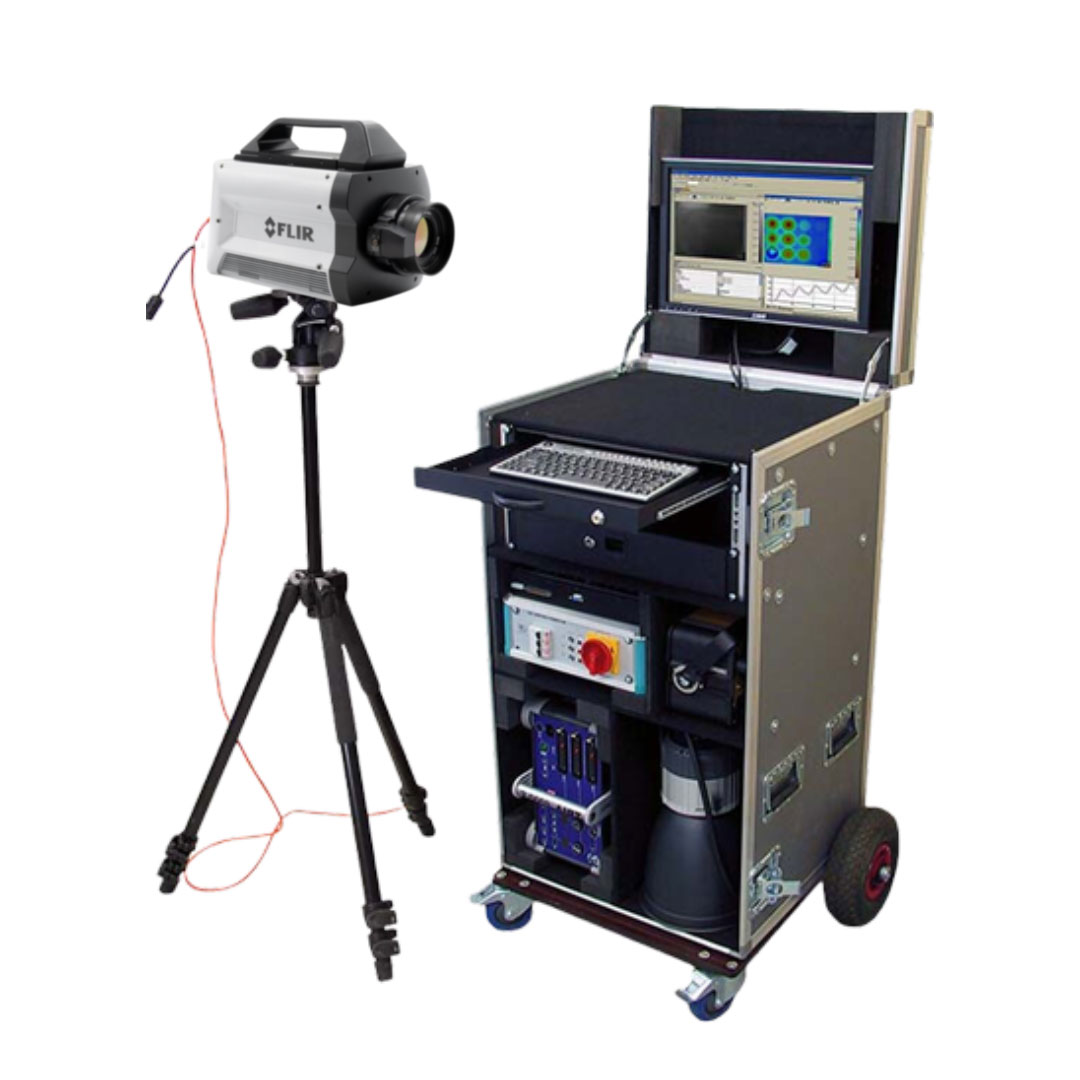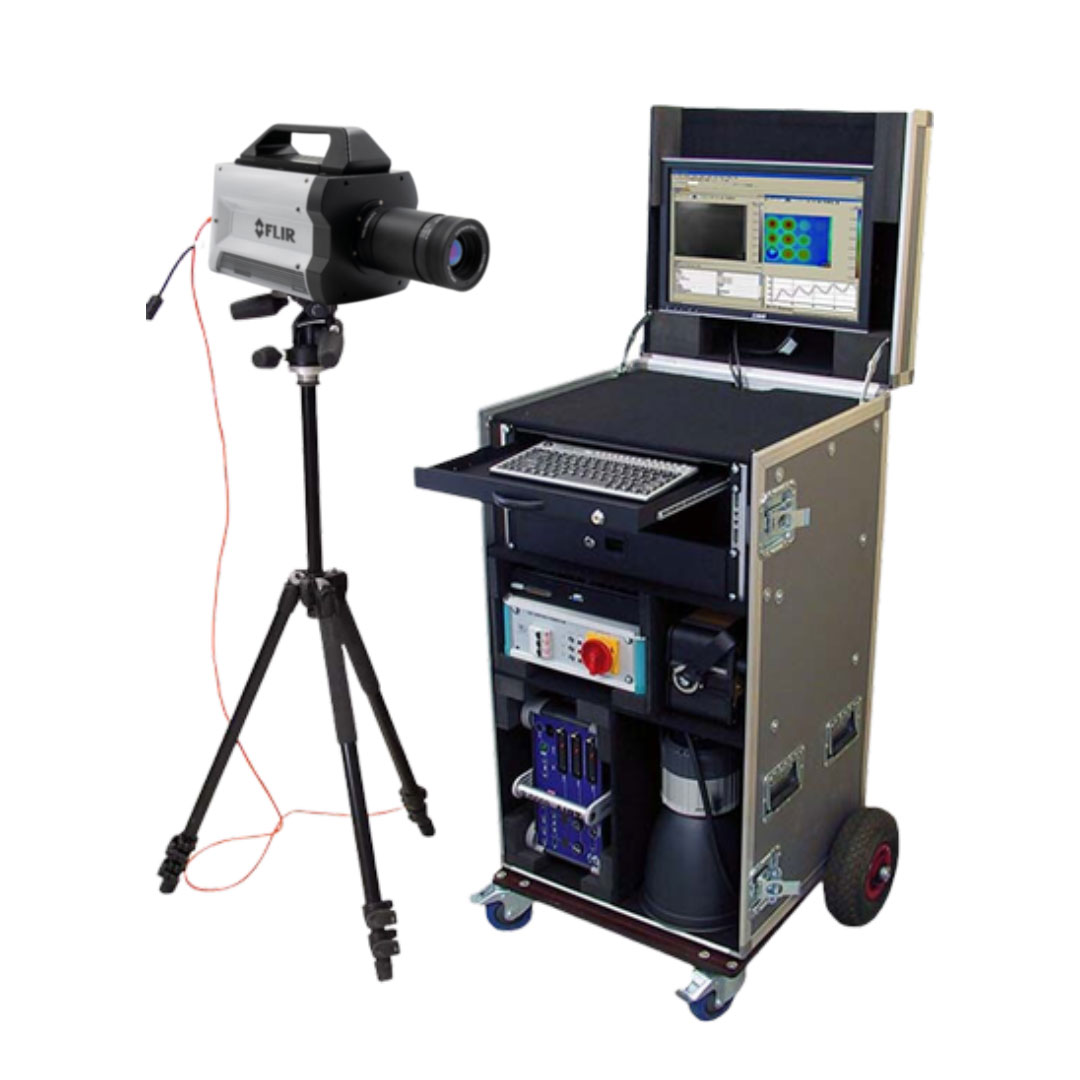FLIR X8580 SLS + Complete Active Thermography System
FLIR X8580 SLS + Complete Active Thermography System
Guaranteed safe & secure checkout

*We also accept ACH/wire transfer, checks, and purchase orders.
MoviTHERM’s FLIR X8580 SLS non‐destructive testing systems use active thermography for the reliable detection of delaminations, impact damages, “near side” defects, water inclusions, debondings, and other defects. The system achieves precise measurements and is ideal for inspecting composites, metals, semiconductors, microelectronics, batteries, ceramics, and more.
Our irNDT system accommodates a wide range of irNDT measurement methods, including: Flash‐Thermography, Lock‐In Thermography, Transient Thermography, and Vibro‐Thermography. It also works with multiple excitation sources and with cooled or uncooled infrared camera systems.
Documentation
Specifications
Camera Specifications
| System Overview | |
|---|---|
| Detector Type | Strained layer superlattice (SLS) |
| Spectral Range | 7.5 μm (lower), 11.5–12.5 μm (upper) |
| Resolution | 1280 × 1024 |
| Detector Pitch | 12 μm |
| Thermal Sensitivity/NETD | 40 mK typical |
| Operability | 99% typical |
| Sensor Cooling | Linear sterling cooler |
| Electronics | |
| Readout Type | Snapshot |
| Readout Modes | Asynchronous integrate while read, Asynchronous integrate then read |
| Synchronization Modes | Sync-in, Tri-Level Sync, Sync-out |
| Image Time Stamp | Internal precision timestamp, IRIG-B AM decoder, TSPI accurate |
| Trigger Modes | Trigger In, Record Start, Header Based |
| Minimum Integration Time | 270 ns |
| Pixel Clock | 355 MHz |
| Frame Rate (Full Window) | Programmable; ~0.5 Hz to 181 Hz |
| Subwindow Mode | Flexible windowing down to 64 × 4 (steps of 64 columns, 4 rows) |
| Dynamic Range | 14-bit |
| On-Camera Image Storage | RAM (volatile): 16 GB RAM included SSD (non-volatile): 512 GB included (compatible with 4 TB) Data transfer: SSD to Research Studio via data streaming buses |
| Radiometric Data Streaming | Simultaneous Gigabit Ethernet (GigE Vision), Camera Link, CoaXPress® 1.1, dual 5 Gb links |
| Standard Video | HDMI, SDI |
| Command and Control | GigE, USB, RS-232, Camera Link, CXP (GenICam protocol supported over GigE or CXP) |
| Temperature Measurement | |
| Standard Temperature Range | -20°C to 350°C (-4°F to 662°F) |
| Optional Temperature Range | Up to 3,000°C (5,432°F) |
| Accuracy | ≤100°C/212°F: ±2°C (±1°C typical) >100°C/212°F: ±2% of reading (±1% typical) |
| Optics | |
| Camera f/Number | f/2.5 or f/4.1 |
| Motorized Lenses | 17 mm, 25 mm, 50 mm, 100 mm, 200 mm |
| Manual Lenses | 17 mm, 25 mm, 50 mm, 100 mm, 200 mm |
| Micro/Macro Lenses | 1x |
| Lens Interface | FLIR FPO-M (4-tab bayonet, motorized) |
| Focus | Motorized (compatible with manual) |
| Filtering | 4-Position warm filter wheel, standard 1-inch filters |
| Image/Video Presentation | |
| Palettes | Selectable 8-bit |
| Automatic Gain Control | Manual, Linear, Plateau equalization, ROI, DDE |
| Overlay | Customizable (ability to toggle off) |
| Video Modes | SDI: 720p@50/59.9, 1080p@25/29.97 |
| Digital Zoom | Auto, best fit |
| General | |
| Operating Temperature Range | -20°C to 50°C (-4°F to 122°F) |
| Power | 24 VDC (< 50 W steady state) |
| Weight w/handle, w/o lens | 6.35 kg (14 lbs) |
| Size (L × W × H) w/o lens or handle | 249 × 157 × 147 mm (9.8 × 6.2 × 5.8 in) |
| Mounting | 2 x ¼ in. -20, 1 x 3/8 in. -16, 4 x #10 -24 Side: 3x ¼ in. -20 (each side) |
Description
About the FLIR X8580 SLS Camera
The FLIR X8580 SLS is a high-speed, high definition longwave IR camera designed for scientists and engineers who need to capture detailed imagery of fast events, perform custom radiometric measurements, or detect points of failure in composites, solar cells, and electronics. This thermal imaging camera combines 1280 × 1024 resolution from the SLS detector with high-speed frame rates to offer shorter snapshot speeds and wider temperature bands for crisp stop motion imagery of high-speed events. With a four-position motorized filter wheel and support for FLIR motorized focus lenses, the X8580 SLS will provide high quality recordings, save time, and mitigate frustration in dynamic acquisition environments.
- High Resolution, High Speed: Capture full HD 1280 × 1024 imagery with integration times that are 10x shorter than MWIR InSb cameras (ambient temperatures)
- On Camera RAM & SSD Recording: Record up to 34 seconds of full HD resolution data directly to on-camera memory, or up to 15 minutes to included 512 GB SSD
- Multiple Software Interfaces: Stream thermal data directly to a computer to view, record, and analyze with FLIR Research Studio
About the Active Thermography System
MoviTHERM’s FLIR X8580 SLS non‐destructive testing systems use active thermography for the reliable detection of delaminations, impact damages, “near side” defects, water inclusions, debondings, and other defects. The system achieves precise measurements and is ideal for inspecting composites, metals, semiconductors, microelectronics, batteries, ceramics, and more.
Our irNDT system accommodates a wide range of irNDT measurement methods, including: Flash‐Thermography, Lock‐In Thermography, Transient Thermography, and Vibro‐Thermography. It also works with multiple excitation sources and with cooled or uncooled infrared camera systems.
Features:
- Non‐contact irNDT
- Works with cooled and uncooled IR Cameras
- Compatible with multiple irNDT methods
- Effective even on low emissivity targets
- Modular hardware and software
- Configurable for different geometries and materials
What is Active Thermography?
Active thermography is an effective method for non-destructive testing of materials involving the induction of heat flow in a test object by external excitation. The heat flow within the test object is influenced by internal conditions and measured on the surface by an IR camera. This technique detects not only the smallest surface defects, but also internal structural defects under the surface.
Active vs Passive Thermography
Active and passive thermography are techniques used for detecting heat patterns and abnormalities in various applications. While passive thermography relies on naturally occurring temperature changes, active thermography introduces an external energy source to create thermal contrast.
How does the system work?
MoviTHERM’s modular irNDT system works by utilizing active thermography. A heat source provides the inspected material with a thermal excitation. The flow of thermal energy through the material has a direct effect on surface temperatures. The surface temperature is recorded over a certain time period with an infrared camera and analyzed by the irNDT software.
The software produces an image that provides information about the internal structure of the material.
- Non-Contact Defect Detection: Active thermography reveals the most subtle defects that are visibly undetectable.
- Flexible & Expandable: Upgrade a system by adding excitation sources, irNDT methods, and higher end IR cameras.
- irNDT Made Easy: Complex analysis technology is simplified for dependable inspection results.
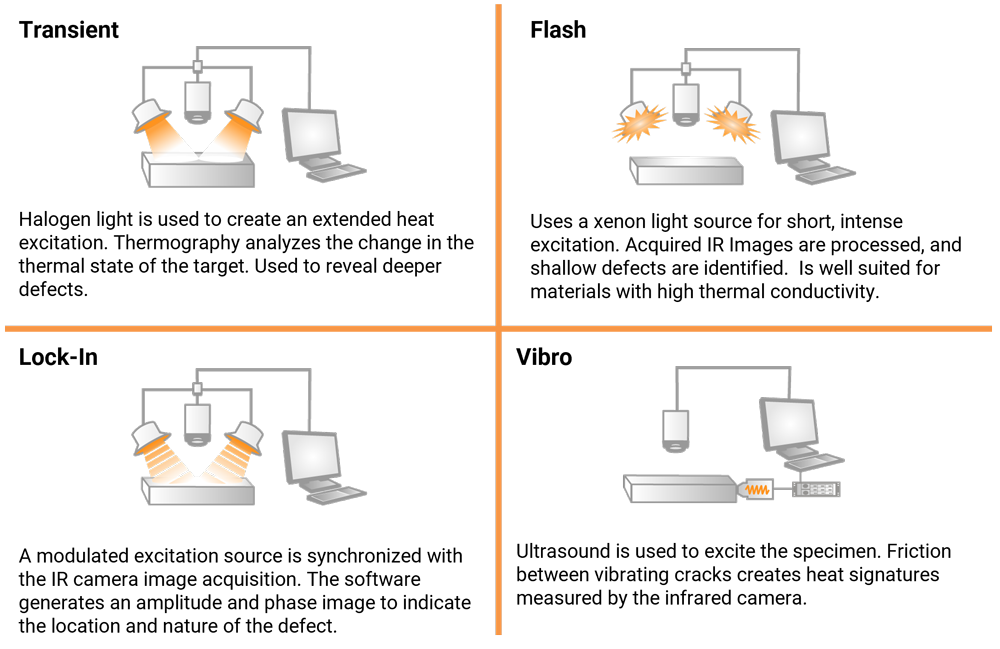
The Software Interface
